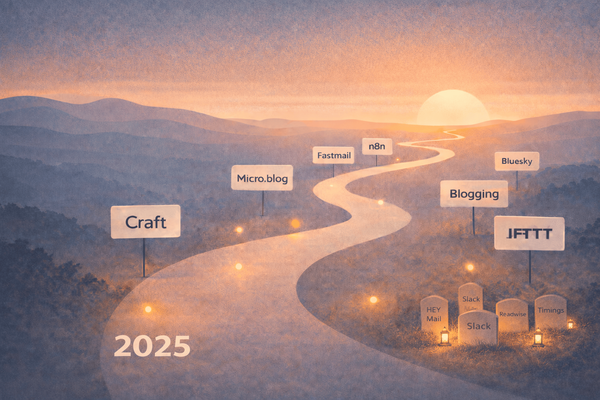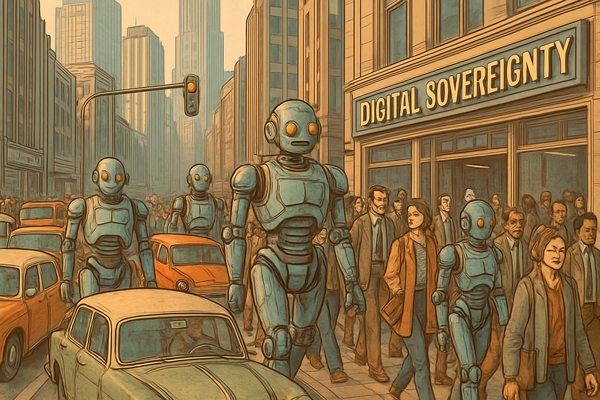Apple’s Motivation for Marzipan
I’ve been thinking about Apple’s Marzipan project since rumors started to flow last year before the WWDC 2018 developers conference where it was officially announced. I wrote a blog post about it a few weeks ago. I keep thinking about it. Brent Simmons, a well known developer has many many questions
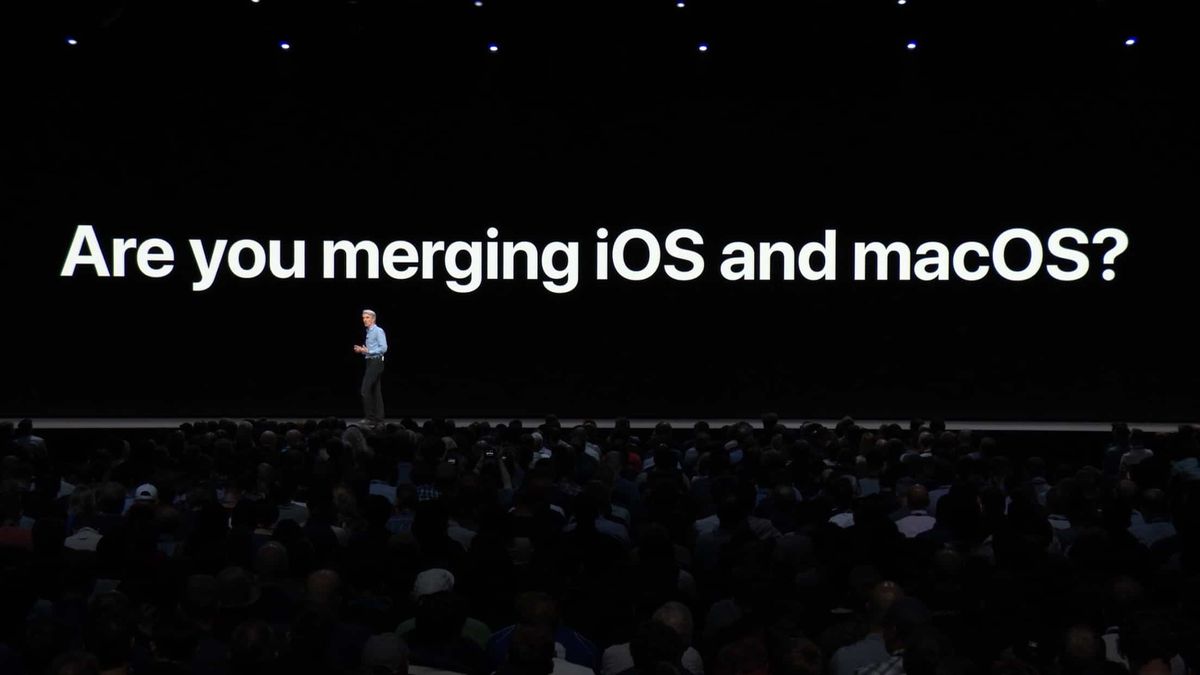
I’ve been thinking about Apple’s Marzipan project since rumors started to flow last year before the WWDC 2018 developers conference where it was officially announced. I wrote a blog post about it a few weeks ago. I keep thinking about it. Brent Simmons, a well known developer has many many questions still without answers. Here are my thoughts on the subject. Disclaimer: I used to be an indie iOS developer for five years. I left in 2013 just before iOS 7.
Hang tight, bumpy road ahead!
- Officially, Marzipan is coming out this year to help developers port their iPad apps to the macOS platform;
- Marzipan seems to be a solution in search of a problem;
- Expect a lot of confusion in developers community for a long long time;
- Ported iOS apps on macOS are a side product of a more profound master plan. This is a transitive state;
- Expect a lot of iOS apps invading the Mac and more confusing business models for developers;
- Marzipan will create more new interesting apps on the iPad than it will for macOS;
- Marzipan will prepare the ground for more powerful apps for much more powerful iPad, when they are released;
- Besides Marzipan, iOS 13 is the other key enabler for what comes next for iPad: mouse support, multi-tabbed applications, more complete file management;
- All things being equal, Apple invested much more in pushing the envelop with the iPad than they did with the Mac in the last five years but the trend will change with a game changer;
- Apple is putting the pieces in place to kick Intel out once and for all;
What is Marzipan anyway?
Marzipan is a project that started at Apple around 2017. The goal was to create a technology that would allow an iOS developer to write an application for iOS, preferably on the iPad, that could (or at least should) run perfectly on macOS without major code change. Think of it as another “write once, run everywhere” case but within Apple ecosystem.
Is this a good idea?
On paper this seems to be a good idea. When Apple announced Marzipan last year, it was revealed that on macOS Mojave, four new applications were actually built with an early version of it: News, Stocks, Voice Memos and Home. But the results are not as great as they should be on the user interface side. Why? Because these apps introduced new UI elements that look strange on macOS. The following screen shot is an example of this taken from the News.app. The red delete toggle on the left, the handle on the right of each list element is directly coming from iOS. There are many more cases like this.
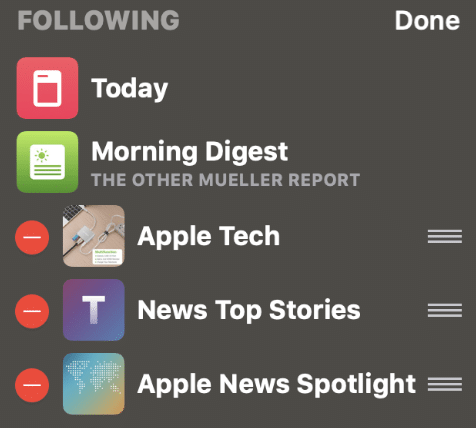
Another problem seems related to unsupported keyboard shortcuts that are commonly used on macOS since a very long time. Apple has time to fix these and other problems before Marzipan officially launch. We’ll see. For now, this is still beta software in my opinion.
We should expect to see and hear a lot more about Marzipan plans and technologies at this year WWDC conference in June with a public beta or even a final release along with iOS 13, Xcode 11 and macOS 10.15 this fall.
But why?
The question that pops up in my mind every time I think of Marzipan: does macOS really need a bunch of new applications coming from iOS? This strategy is common when a company wants to make a bunch of apps available on a new platform to help kickstart it. But macOS isn’t new so there is no real need to bring in new applications to legitimate its existence. For the missing apps, why should we expect developers to rush with Marzipan in place if they didn’t bother writing apps for macOS for all those years, even the most simple ones? What are the incentives for them? Could this be the user base? How many active users does macOS platform has? According to Apple, there is roughly 100 millions active users. It is ten times smaller than iOS. Is this big enough to entice developers to start porting their apps on macOS? Maybe. But I’m not really convinced. Keep in mind that PC sales in general are declining since quite a while. Yet the Mac is still seeing increasing market share. Yet, we must admit the world went mobile with smartphones as their primary device a long time ago. For me, Marzipan seems to come at the wrong time, for the wrong reasons. So, what else there is to it?

How will the landscape be impacted?
First, I don’t see Marzipan as a trojan horse for merging iOS and macOS. Apple already responsed with a big NO to this question. So, iOS and macOS will stay on different paths for a very long time. If not forever. Yet, Marzipan is coming.
How will the application landscape change when Marzipan is released this coming fall? Is macOS going to be flooded with cheap applications coming from the iOS world? You bet. They will constitute the first wave of Mazipan apps to become available. How will these apps be made available for purchase or free download if you already have the iOS version? Well, on the App Store we could see something like “This application also runs on macOS computers”. What is unknown is if the user will have to buy the macOS version. Or will it be universal apps like we have today? On the Mac App Store, we could see a new section like “Applications from iPhone and iPad”. One thing is pretty clear, the iOS economy and business model will put a formidable pressure on the Mac App Store for lower prices. This is not looking good. Things are still unclear though.
Is iOS going to see more powerful applications because these can also run on “more powerful” computers like the Mac with very small porting efforts? Maybe. How powerful can they be on the Mac since the starting point of these apps is a device with a few gigs of system memory? Only the higher end 2018 12.9″ iPad Pro has a meager 6 GB of system memory. Compared to modern computers, this is small.
But then what? Is this all there is to Marzipan? Maybe not. Stay with me please.
Some pieces are already in place
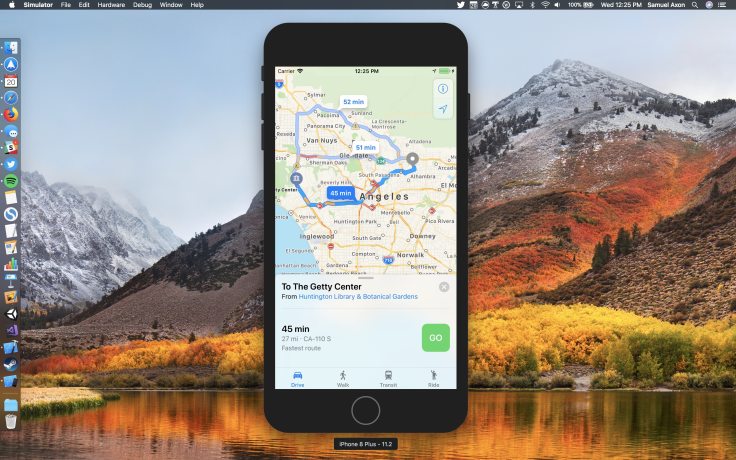
We have to remind ourselves that iOS developers already have the ability to run iOS applications on macOS. This is possible with the iOS simulator that comes with development tools under the umbrella of Xcode. This is not something new, quite the contrary. This is possible since iPhone OS 2.0. I suspect this is a big part of Marzipan underpinnings. The simulator is not an emulator of ARM code on Intel. When running on the simulator, Xcode generates X86 instructions, not ARM instructions. To me, the challenge for Apple is to make a great runtime environment for these Marzipan applications so they look great and behave the right way on macOS. For now. But this is a transitory state.
What is the master plan then?
There has to be a bigger plan at Apple to make Marzipan a reality and to justify the investments. Because right now, what Apple is saying is not convincing at all. The plan is to kick out Intel out of the Macs and replace them with A Series ARM processors. And by doing so, Apple has to have an operating system alternative well into place with a lot of great, powerful and full features apps. iOS is going to be the answer for this in a few years with the millions of apps already available on iOS.
We should expect that an ARM-based Mac will be quite powerful beast compared to currently shipping Intel-based Mac on a processing power to power consumption ratio scale. Apple will use its ML enabled Axx processor with their custom built graphic processor, something that Intel won’t ever deliver anytime soon. Coupled with their T2 or TX processor, FaceID and Apple will be in a position to control nearly all the major pieces of this machine (just like the iPhone by the way), from the processor, to the GPU, the system on a chip up to the operating system and the application runtime and distribution channel. Why would Apple stick to Intel when an ARM-Based Mac is as much powerful if not more?
A few things to fix first
This year, Apple is known to be introducing a redesigned iPad home screen with iOS 13. What is not known is how big is the redesign going to be. But along with it, I expect Apple to introduce mouse support on the iPad. Yep. Read my words. You’ll see why later on. Mouse support is much more easy to introduce on iOS than to modify macOS to support touch based input. And I do think that mouse support on iPad is as valid as physical keyboard support introduced a few years ago. I’m quite aware of the iPad being a touch based computer. Apple is slowly moving the iPad in traditional computers territory without sacrifying too much of its original intend.
I also expect Apple to fix another major iOS design flaw on the iPad: which application has the focus when running in split-view and typing on the keyboard? If you start typing on the keyboard, to which app the keystrokes should be sent? How does the user know which one is the active one? On the iPhone, since there is only one app at a time on the screen, this is obvious but since iOS introduced split-view mode, this has become an issue that Apple needs to address. Why? To make the iPad a mature and modern computing environment allowing more complex usage patterns. To make the iPad closer to a traditional computer.
I suspect Apple decided to postpone homescreen redesign on the iPad because they wanted to find the right answers to these challenges and better align their different schedules between iOS 13, Marzipan and the release of the rumored ARM-based Mac.
One More Thing
Back to the ARM-based Mac. This machine that many people would like to see and own is not going to run macOS. Why? First, for a practical reason: Apple is not going to maintain another version of macOS just for ARM processors. Period. Even if people think they have a version running in their labs, it will stay in their lab. macOS is legacy stuff. iOS is the future. And Apple is getting ready for this. Second, while we wait for ARM-based Mac, currently shipping iPad are already very powerful beasts. And so this is why all ARM-based machines coming from Apple will run iOS.
A transforming landscape
Sometimes next year, the Apple landscape will look like this. iOS 13 will be mature. Same thing for macOS with Marzipan built-in at version 1.0. iOS developers will have flooded the Mac App Store with all sort of small applications and confusion will abound. Those Marzipan based apps available for many months will be able to run without any modification with full mouse support because they will run the fully fledged iOS 13, the first release since 2010 that doesn’t make a big iPad look like a Fisher Price computer but like a real Mac replacement with real mouse and keyboard support and modern paradigms that comes with them. For those who prefer a touch based device, the iPad will always be the iPad.
But new generation of apps will start to appear on the iPad because of the possibility to run them on more powerful macOS based computers for a while. This will be the long transition from macOS to an iOS only world. The Mac form factor will stay but they will start to use ARM processors with iOS on top. In a few years from now, you’ll be able to buy an iPad with a modern and complete operating system with touch or mouse input. The Mac will still be among us but running this very same mature incarnation of iOS on an ARM processor with mouse and keyboard input.
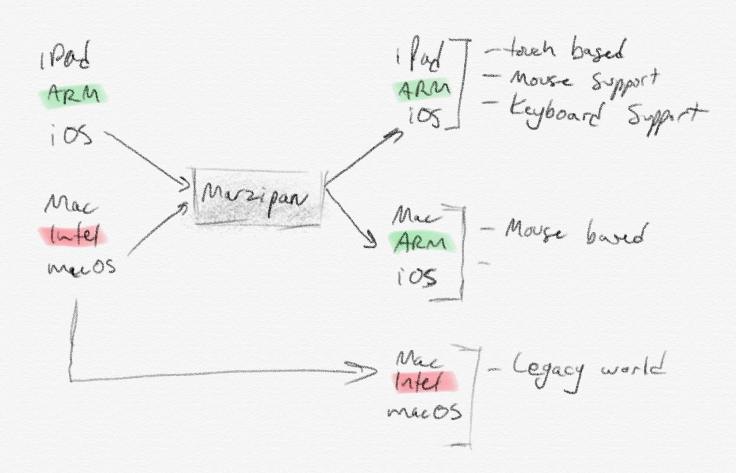
Miscellaneous
The upcoming Photoshop for iPad is a clear indication that we will witness an Apple ecosystem imploding into iOS. It will take years but it will happen.
Good read on this subject: “Marzipan: The False Mac iPad Dilemma Resolved” from Jean-Louis Gassée.
Lot’s of questions here: “Questions about Marzipan Apps on the Mac” from Brent Simmons.
Very interesting and technical stuff here too: “Deeper Integration with Marzipan” from Steven Troughton-Smith.
